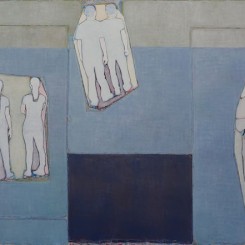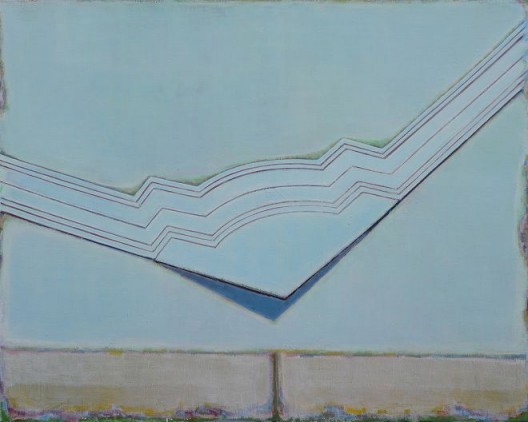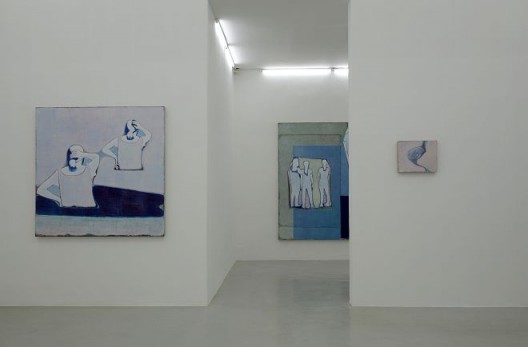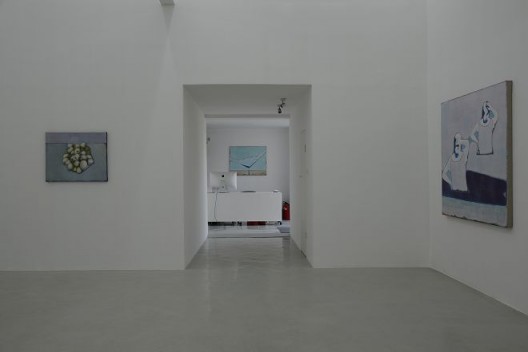This review is included in Ran Dian’s print magazine, issue 2 (Winter 2015–2016)
Magician Space (798 East Road, 798 Art Zone, 2 Jiuxianqiao Road, Chaoyang District, Beijing) Beijing Sep 5–Oct 18, 2015
“La pittura è cosa mentale”—“Painting is a mental thing”. The echo of Leonardo da Vinci’s sentence seems to have become a puzzling impasse for many contemporary painters.
Tang Yongxiang, a Chinese painter born in 1977, has turned it into a question he asks himself constantly. Visiting his second solo show at Magician Space, I became aware of two kinds of tension. One is on the surface: that of a Chinese artist dealing with oil painting as a medium amid today’s contemporary art scene with a pragmatic and methodical attitude, both technically and conceptually. The other one, less visible, and for me more interesting, is that of a man questioning his own personal and cultural content through oil painting by way of a long term discipline; his purpose is to get closer to something more essential, regardless of whether this “closer” is never enough.
The paintings at Magician Space literally embody these two dimensions and the resulting contradiction, as the show conveys the feeling of an artist who is not very young anymore, but who is “still searching” and exploring possible paths.
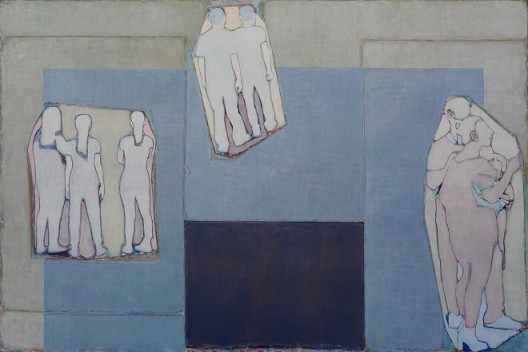
Tang Yongxiang, “Blocks of Color and Three Groups of Figures”, oil on canvas, 200 × 300 cm, 2015 (Courtesy the artist and Magician Space)
The suggested reading, reinforced by the gallery’s introductory text, articulates a postmodern frame which legitimates and embraces any contradiction: paintings (and artworks at large) are always nothing more than an anti-narrative re-combination of re-interpreted and pre-existing elements which can no longer form a whole, as it is simply not possible. They could be seen as islands floating in the same section of an anonymous existentialist sea, colliding randomly, once in a while, because of the currents. In this sense, Tang’s palette of mild and nuanced yellows, purples, light blues and pinks provides the necessary exterior and an ephemeral coherence between the works to support the notion of their unresolved and fragmented nature. Furthermore, the artist has named the paintings using lists of the elements that formally characterize them, adding a layer of language and humor to the conceptual frame.
If this is the case, then everything would be as expected: another conceptual painter proposing his version of the current discourse. My objection is that, if this frame is valid for the larger paintings, wherein the rhythm of the flat fields of color in the background is interrupted by overlapping, enclosed areas including human figures or other representational elements, when it comes to the still life paintings, Tang’s work is exploring a substantially different and riskier direction.
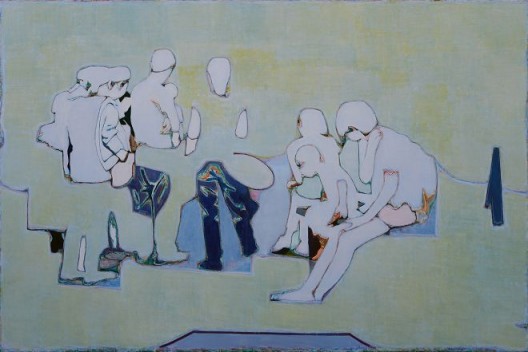
Tang Yongxiang, “A Group of People, Some Blocks of Color in the Middle, Background with a Touch of Yellow”, oil on canvas, 200 × 300 cm, 2015 (Courtesy the artist and Magician Space)
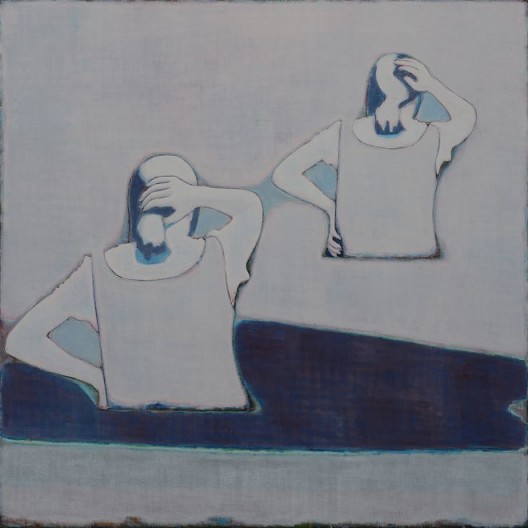
Tang Yongxiang, “The Backs of Two Girls Stroking Their Hair”, oil on canvas, 138 × 138 cm, 2015 (Courtesy the artist and Magician Space)
Although I cannot prove it, I believe he is conscious of this difference and the inadequacy that follows, and that this is part of his personal testing process.
Four smaller paintings in the show communicate a deeper sense of intimacy and otherness: they depict respectively an “Angle”: “A flower”, some “Apples” and “Three bowls”. Their size (ranging from around 100 x 130 to 65 x 80 to 80 x 100 cm) is moderate compared to the bold scale of the bigger canvases (200 x 300 cm); their shape had abandoned the panoramic format for calmer proportions, erring towards the quietness of the square. Instead of multiple viewpoints, the composition is central and a variety of figurative elements is replaced by a single one, which attracts and concentrates the gaze instead of dispersing it.
The technique remains the same, but in the still-lifes, Tang reduces—instead of accentuating—passages between the different planes and layers, allowing the oil medium to express a more ambiguous transparency which, in certain moments, reminds one of tempera as it was used by the Primitive Italians. In this way he creates suspension and indeterminacy around the centrality of the object, and gives greater autonomy and presence to the whole image. If, in “A flower with..” and “A group of apples with..” he maintains the convention of including recognizable elements in a distinct pictorial area separated from the background, in “Angle” and “Three bowls” he lets go of it, leaving them to interact in a more traditional way.
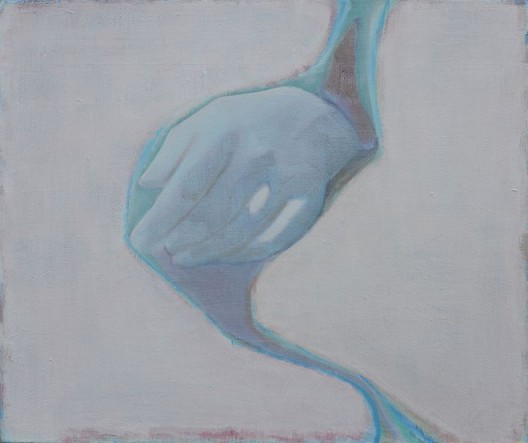
Tang Yongxiang, “One Hand, Pink Background”, oil on canvas, 32.5 × 40 cm, 2015 (Courtesy the artist and Magician Space)
These works interest and intrigue me for what they are, not for what they stand for or for what they represent; they have a strange power and an elusive presence, which, as it happens with certain artworks, resists full disclosure.
They possess the hypnotic simplicity of Zen images, but retain evidence of being the result of an utterly complex technical and mental process. In the large paintings with figurative elements, I see either the transitory stage of the modernist painters heading towards an abstract simplification of forms, as in the earliest figurative Rothkos, or a subjective, anti-narrative variation of postmodern representational painting (with obvious references from the Transavanguardia to David Salle up to Tuymans). This would be possible and reasonable. With the still-lifes, instead, Tang could engage with the tradition as a whole.
Of course, to open a dialogue with Cézanne, Picasso, or de Staël, exploring distortion of space, form and composition (considering the possibilities of a flower motif) sounds like an impossible task—as challenging as looking at Morandi’s monastic discipline (perhaps the Western painter closest to Eastern philosophy), and his care and abandon to look for something beyond the shapes of the same objects painted over and over…. Such might be an unreasonable and naïve conjecture perhaps, but potentially very fruitful.
It is difficult to predict which direction Tang Yongxiang will choose, or if he will go for something totally different; but as he approaches his mid-career age, Tang works and thinks a lot, doesn’t show his works too much, chooses his venues and keeps pushing himself to carefully eliminate heavy conceptual and personal burdens.
Obviously, life, chance and pressure from the institutional game of the art world will play an important role in shaping his future, but his attitude is solid. Meanwhile, I wish him well in the difficult search for an increasingly honest and essential practice to which some of these paintings on view at Magician Space testify with humble and brilliant force.
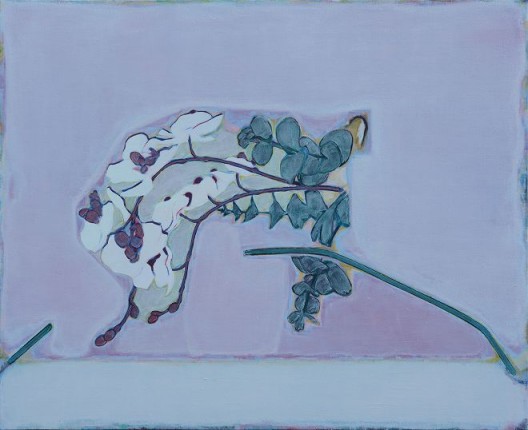
Tang Yongxiang, “A Flower Lying on a Pink Background with Two Lines Underneath”, oil on canvas, 65 × 80 cm, 2015 (Courtesy the artist and Magician Space)
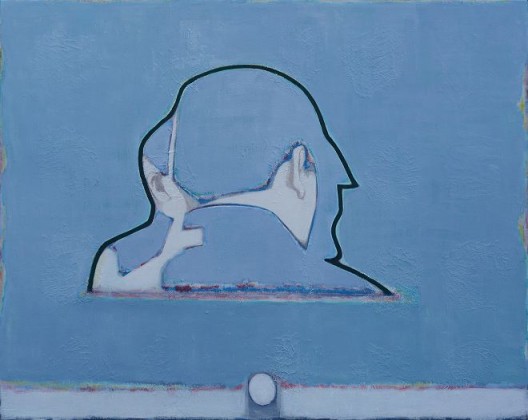
Tang Yongxiang, “The Contours of a Couple of People, Underneath a Circle”, oil on canvas, 80 × 100 cm, 2015 (Courtesy the artist and Magician Space)
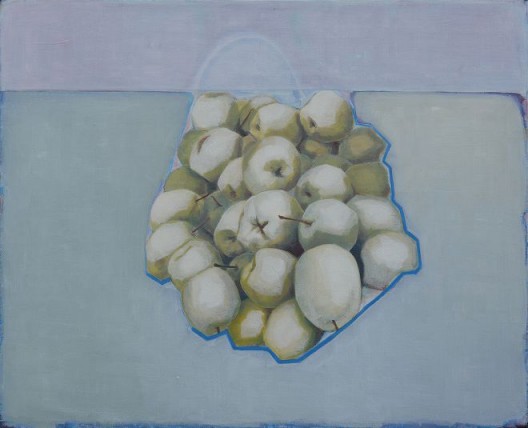
Tang Yongxiang, “Pears Next to Blue Line”, oil on canvas, 65 × 80 cm, 2015 (Courtesy the artist and Magician Space)
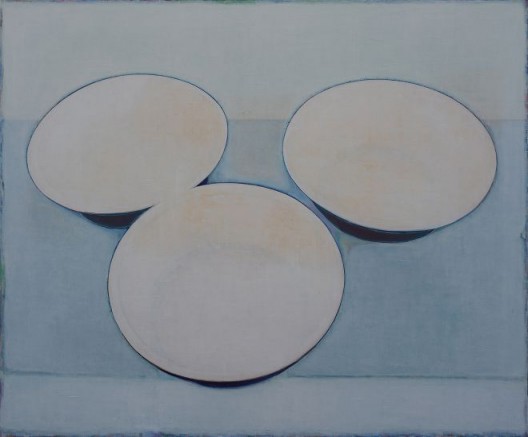
Tang Yongxiang, “Three Basins”, oil on canvas, 150 × 180 cm, 2015 (Courtesy the artist and Magician Space)
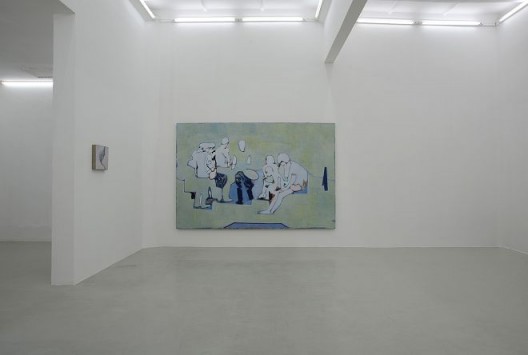
Tang Yongxiang solo exhibition “Tang Yongxiang”, 2015 (Exhibition view, Courtesy the artist and Magician Space)

